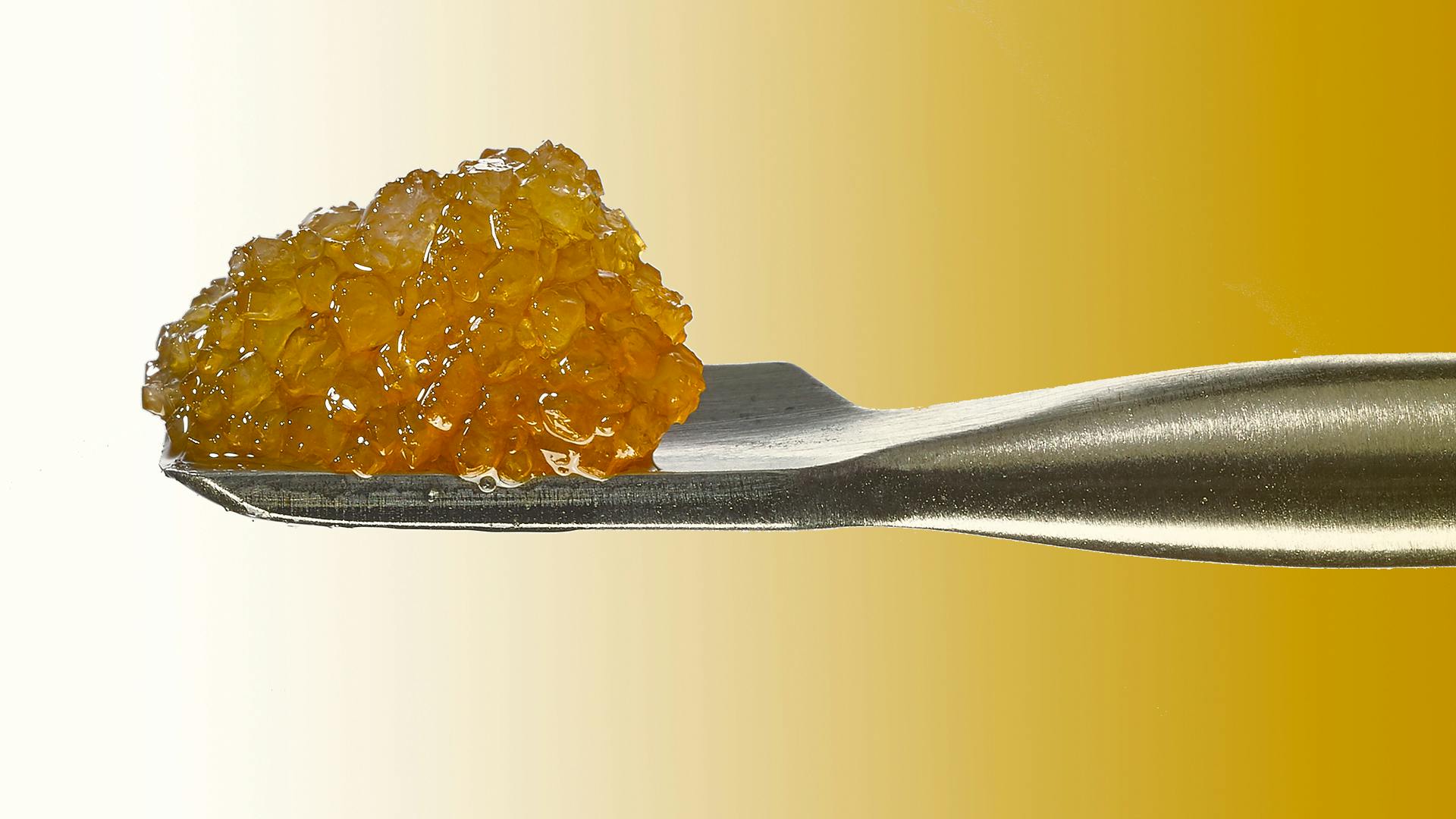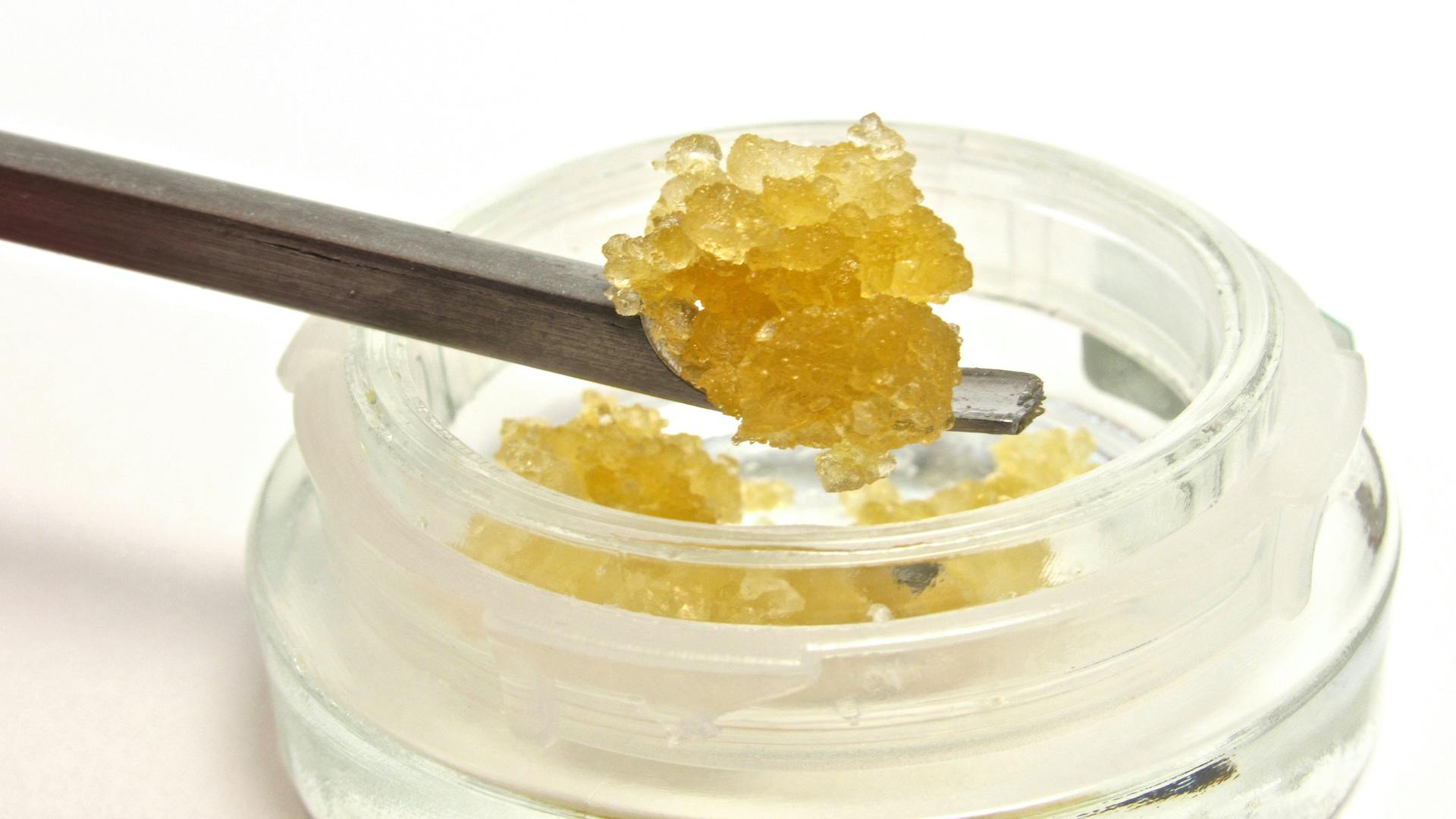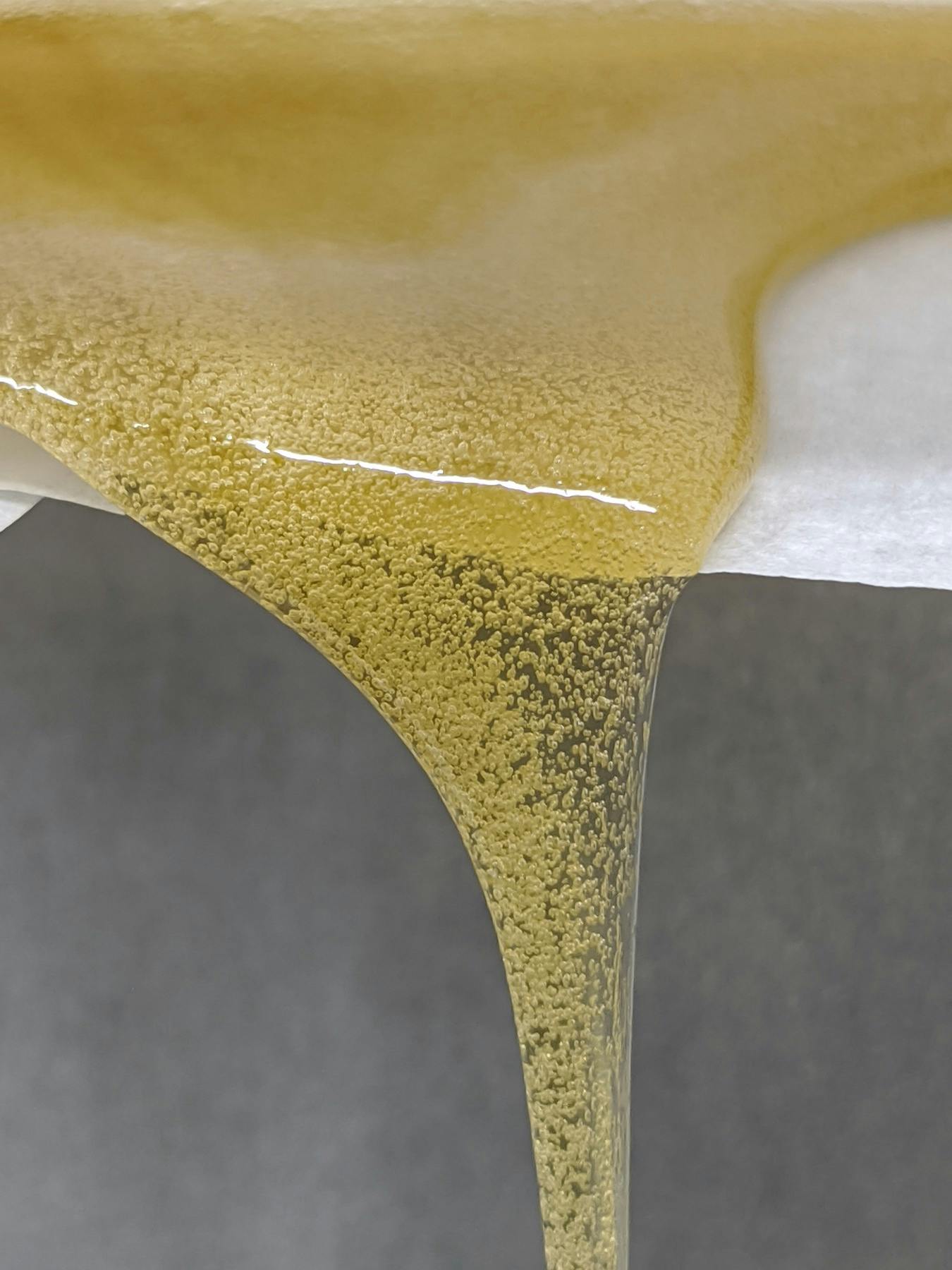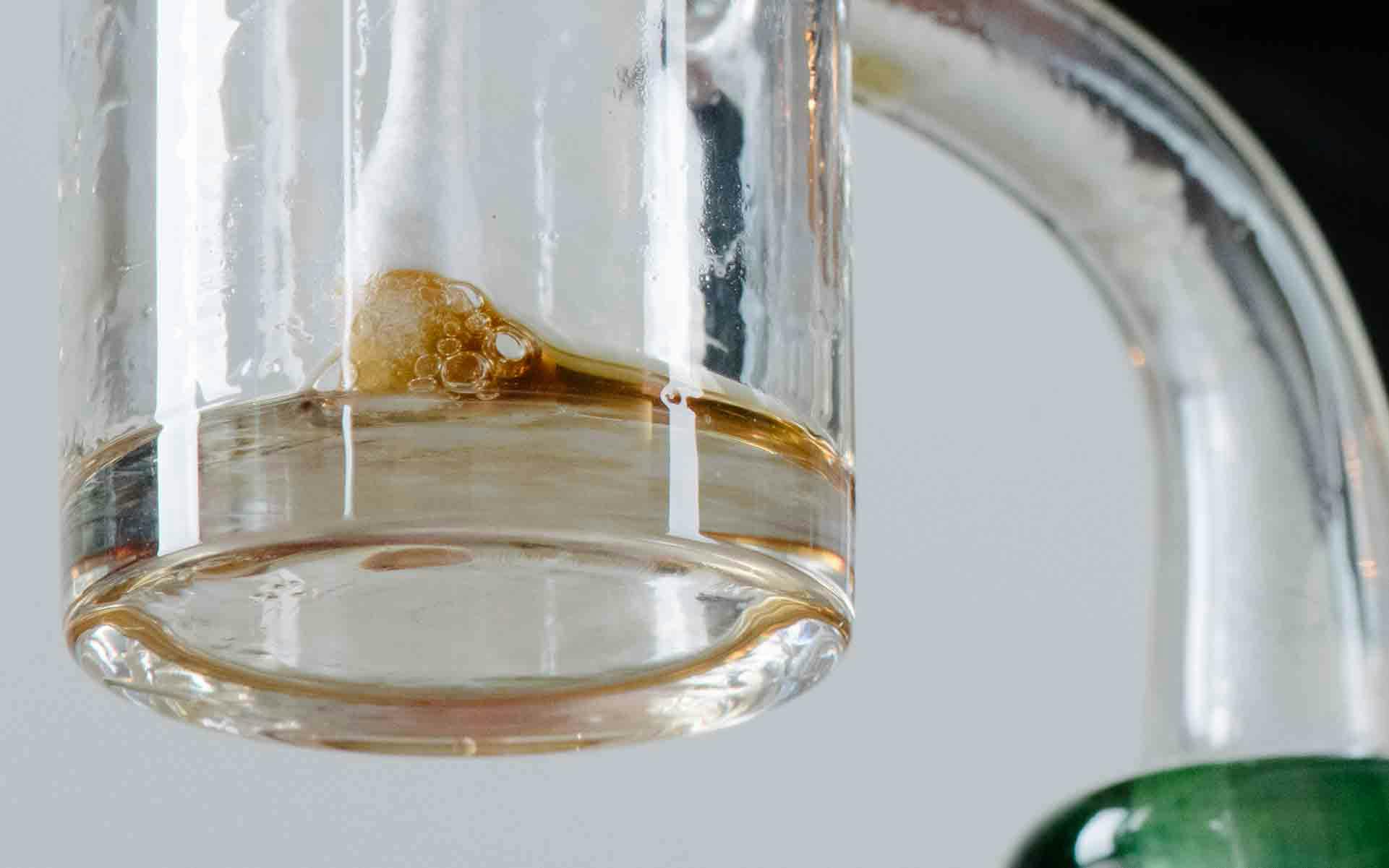
What is hash?
Hash is a cannabis extract, made when trichomes, the resinous glands that line the surface of cannabis plants, are removed and processed into a concentrated form. It is usually brown or dark green in color and comes in a brick or ball.
Hash is a solventless extract, as trichome removal is done with physical manipulation and temperature changes, not with the use of solvents or chemicals.
There are a few different types of hash, and processes to make it have been practiced for centuries.
Hash vs. weed
When people talk about cannabis, weed, or marijuana, they are usually referring to buds, or flower, not hash.
Hash refers to the extract created from the plant’s resinous trichomes. Hash can be extracted in multiple ways; more on its different types below. Because hash is an extract, it typically has a much higher level of THC than flower.
Weed or flower is smoked in pipes, bongs, joints, and more, and hash can either be sprinkled on top of flower and smoked, or put in a dab rig and dabbed.
Where does hash originate?

The word “hashish” originates from the Arabic language, roughly translating to mean “grass.” It is believed that the popularization of hash originated around 900 AD, although some hashes, such as charas, which is the collection of resin on the hands of cannabis farmers, are believed to have existed prior to written documentation. Mahjoun, a sweet treat filled with hashish, is believed to have been the first cannabis edible and to have originated in Morocco.
Shop highly rated dispensaries near you
Showing you dispensaries nearAfter Napoleon’s campaign in Egypt in 1798, French soldiers brought hashish home, and it became popular in the Western world in the 19th century. For years, European doctors imported hashish for research, which led to the introduction of various extraction methods that allowed for further refinement into cannabis tinctures and medications.
By the turn of the 20th century, cannabis extractions were common in drug stores in the US and Europe. It wasn’t until US prohibition of cannabis in the early 20th century that hash products were outlawed and pushed back into the illicit market.
With the reemergence of cannabis enthusiasm in the 1960s, hash found its way back into the limelight. Countries such as Nepal, Afghanistan, and Morocco saw an increase of hash exportation to Western countries. At the time, imported hash mainly came in the form of hard-pressed bricks made from heat and pressure.
It wasn’t until the late 1980s when gland separation was introduced to the West through a machine called the “master sifter.” According to Ed Rosenthal in his book Beyond Buds, this breakthrough machine by John Gallardi used vibration to separate trichome glands from plant material.
During this time, Neil Schumacher and Rob Clarke began experimenting with water extraction methods, the early precursor to what we now call bubble hash, or ice water hash.
The equipment used to popularize ice water extraction was introduced in 1997 by Reinhard C. Delp at the High Times Cannabis Cup. His patents would later be adapted and modified by Mila Jansen with her pollinator isolation bags.
This design would be further improved upon by Canadian hash enthusiast Marcus “Bubbleman” Richardson with his BubbleBags, one of only a handful of companies worldwide who have a leased permission to use methods from the original 1999 patent.
What’s the difference between hash and other cannabis concentrates?
Hash is a cannabis extract that has been around for thousands of years, whereas most other cannabis concentrates have only been around for the past few decades with advances in extraction technology.
Hash is simple and easy to make; there are several methods of making it, and anyone can make it in their home safely and with minimal supplies. Most other concentrates—except for rosin—require expensive equipment and need to be done by legal, licensed, and experienced technicians.
Do not attempt to make solvent cannabis extractions on your own, and always make sure to buy any concentrate from a licensed store, which requires products be tested, to know that you are getting a product without contaminants or other harmful compounds.
Different types of hash

Dry sift hash
Dry sift, also called dry sieve, is a collection of refined resin glands that have been separated from cannabis flower using a series of fine mesh screens. It’s essentially a refined form of kief.
To create dry sift, extractors rub, roll, and tumble dried cannabis over a finely woven mesh screen. This agitation breaks off dried resin glands from the plant matter and the trichome heads pass through the screen.
Extractors usually rub the dry sift through multiple screens of finer and finer meshes to further refine the hash.
The powdery resin is often used to top a bowl or is sprinkled into a joint to add potency. Others prefer to press it into traditional hash or into rosin to dab.
Bubble hash (ice water hash)

Bubble hash, also known as ice water hash, is created by placing cannabis buds in ice water, which freezes trichomes. The mixture is then stirred or agitated, breaking off the trichomes, and the resulting liquid is filtered through a series of fine screen bags.
The resin is then collected and dried, and the product is bubble hash. Its appearance and texture can range between dry and chalky, to greasy and oily.
The quality of hash is graded on a star system—six stars is the most refined and highest quality; one star the least refined and lesser quality.
High-grade ice water hash, often called “full melt” or “ice wax,” can be dabbed, while low-quality grades are commonly pressed into rosin, smoked like a traditional hash, or reserved for infusions.
Making ice water hash is often referred to as “washing” because bubble hashmakers can use specially designed washing machines to agitate plant material.
How do you smoke hash?

Hash can be consumed in a number of ways.
- Traditionally, hash has been consumed orally, either as a solid or infused into a beverage such as the traditional Indian drink bhang
- Hash can be smoked, either on its own or with flower, on top of a bowl or rolled into a joint
- Some types of hash can be dabbed—full-melt hashes, which are high quality and have the ability to melt completely in a nail, leave little residue
To get started smoking hash, you’ll need a pipe or a bong. If dabbing, you’ll need a dab rig, dab tool, and heating mechanism, such as a torch or e-nail.
As hash is a concentrate, its effects will be much stronger than smoking cannabis flower. Hash potency can range from 40-80% THC, depending on starting material and extraction methods, whereas flower is usually in the 15-25% THC range.
How to make dry sift hash
Making hash at home today is easy and only requires a few inexpensive materials from a hardware store. You can also purchase ready-made screens for dry extractions, hash presses for brick hash, and bubble bags for ice water extractions online.
Check out our video above with Mark at Funky Skunk Extracts on how to make dry sift hash (lightly edited transcription follows).
Hash is a concentrated form of cannabis. We take the cannabinoids and separate them from the plant material using a dry sift method, which we then press into hash.
Our hash is different than BHO and other solvent-based extractions in that we don’t use a solvent. It’s entirely mechanical and uses different temperatures to extract the cannabinoids from the plant material.
The dry sift screen method
- Start with properly cured frozen material. It’s important to get your temperature as low as possible because frozen trichomes will break off their stocks and separate from the plant material more easily.
- Once you get your material on the screen, start breaking it up and spreading it around; wax on, wax off.
- Dry sifting on a screen is a very delicate process. You’re not going for quantity, but quality, and expect a very low return. As long as you’re careful, it should be a very high quality.
The dry ice method
- Combine your plant material with about 40% dry ice. Dry ice is five times cooler than regular ice, about -109°F. These super cold temperatures combined with friction caused by shaking the bag will cause the trichomes to break off their stocks and fall into the collection vessel below.
- The longer we shake, the more plant material will break up and make its way through the screen, contaminating your kief. This is why old school methods of making hash are as much of an art form as they are a science.
- It takes practice working with different strings to get the feel for the right time to stop. You want to maximize yield without sacrificing quality.
- When satisfied with the shake, it’s time to collect.
See the difference in quality between the two methods: The dry sift is a beautiful golden color whereas the dry ice has been contaminated with some plant material, making it green.
Turning kief into hash
- Fill up the hash press with kief. The traditional method is to wrap the kief in plastic and then in layers of wet newspaper, alternating between heating the brick slowly on a hot plate and rolling it with a rolling pin, sometimes for hours to achieve the correct consistency.
- Jack it up like you’re changing a tire, and in just a few minutes, you’re done.
- You can see by its dark and shiny surface that the trichomes have melted together.
Once we break it open, we see the gooey Play-Doh consistency and the beautiful golden brown color that we’re looking for.
Patrick Bennett and Pat Goggins contributed to this article.
By providing us with your email address, you agree to Leafly's Terms of Service and Privacy Policy.



